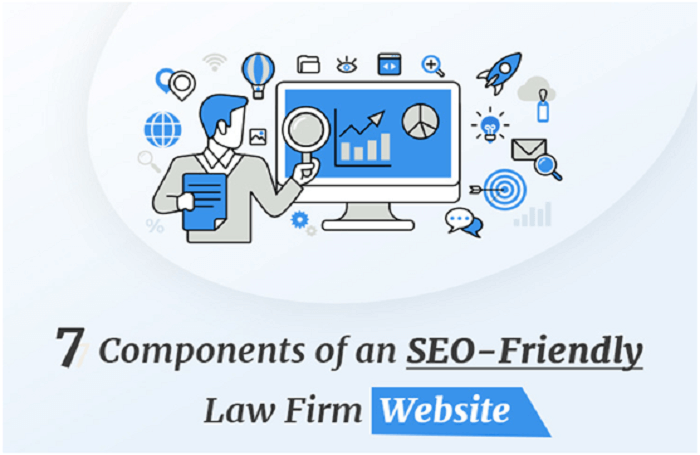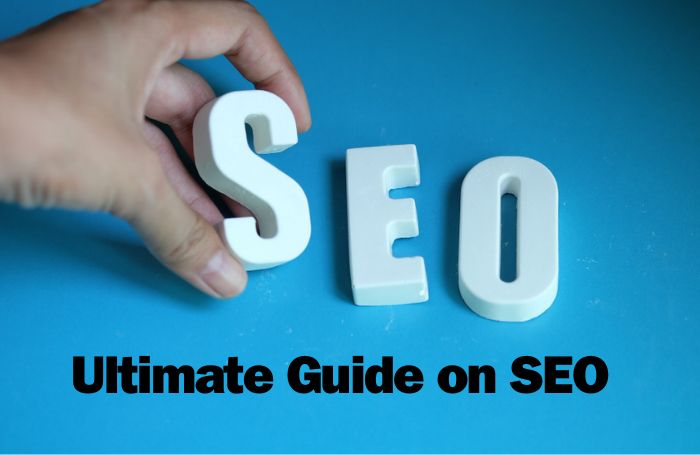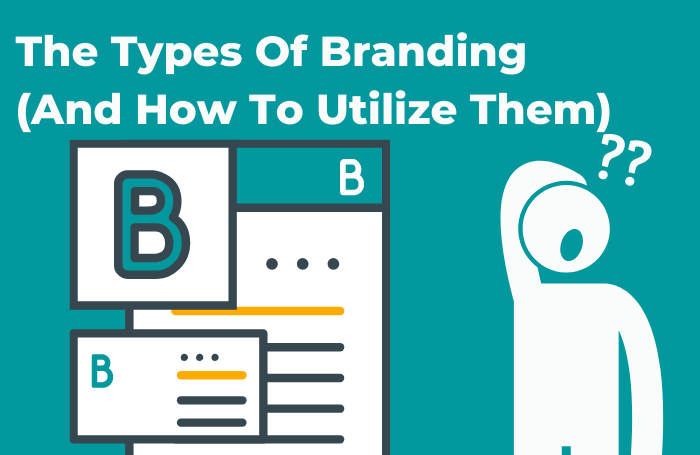
In today’s digital environment, it’s imperative to be aware of all the techniques to increase organic traffic to your website. The jargon used, such as SEO-friendly website design, image optimization, technical SEO, and more, may confuse those who are new.
If people aren’t aware of your product, it doesn’t matter how good it is, which is something that effective marketing does. In a similar vein, no matter how attractive or well-structured your website is, you will need the traffic to grow your business. To acquire visitors, you must be highly rated on search engine results pages (SERPs).
247 Legal Assist understands legal is a highly competitive field that necessitates lawyers’ expertise and technical awareness. As a result, law firms must adopt a creative and strategic approach to attract more clients via search engines.
The fact that you’re reading this indicates that you’re either considering SEO or, at the very least curious about it. In either case, all you need to know is that SEO is required to get your website to rank organically and attract potential clients.
So, what exactly is SEO? What are the essential components of a world-class SEO campaign? That is, after all, the golden question, which Google guards with its complicated, robotic chest.
The jargon used by those in the field, such as SEO-friendly website design, technical SEO, image optimization, and more, may confuse those who are new.
As a result, having an SEO-friendly website becomes critical. For your business to succeed, SEO can draw traffic and convert it into sales. You’ll be relieved to learn that the foundations of creating an SEO-optimized website for a law practice are straightforward and constant.
So, in this post, we’ll look at the seven tried, tested, and proven key components to construct a solid and trustworthy foundation for your SEO-optimized website.
What exactly does SEO-friendly mean?
In a nutshell, an SEO-friendly website simplifies evaluating and analyzing the site by search engine crawlers. A close look at its critical components is as follows:
1. Compatibility With Mobile Devices
Because mobile devices account for the bulk of all search engine activity, making sure your website is responsive (or compatible with smartphones, tablets, and other mobile devices) is critical.
Aside from usability, a mobile-friendly website will help it rank higher in Google searches (when users are on a mobile device.) Other forms of search marketing like SEO for eCommerce & Google Maps can also benefit from responsive design.
Responsive design is now a ranking criterion in Google’s mobile search. Try utilizing Google’s mobile-friendly testing tool to check where your site sits from the perspective of Google bots.
Your website should fit the screen size of all devices. These users will have a negative experience on your site if you do not adjust for mobile devices.
Consider using a smartphone to visit a desktop version of your website. As your website becomes device-friendly, it will be resized to a fraction of its original size. It would be difficult for users to read the text, view the graphics, and click on the links.
Your audience will have a negative experience. Your visitors will fast leave your site and go to a competitor’s site that is better optimized. Because Google believes your website is related to the user’s search intent, it will rank it higher in the search results. Google can read this as a positive signal, so leads must stay on your site longer.
Overall, SEO-friendly websites are important because they keep visitors on your page longer, which assists your website rank higher & better in search results. Integrate responsive design into the website design to make it more optimized. By doing so, you can create a more SEO-friendly design, keeping leads on your page for longer.
2. Site Loading Time
One of the most underappreciated yet important search engine ranking variables is site load speed. Slow-loading websites are associated with poor usability, according to Google. Websites that take more than a couple of seconds to load will have an uphill struggle with SEO. Google stresses user experience as one of the most critical webmaster criteria.
The structure of a website’s backend is frequently linked to load speed. Slow-loading websites are caused by various factors, including dense HTML coding structures, Flash media, and huge image and media files.
All of these issues, however, may be resolved with the help of an SEO-savvy web developer. A web-based tool can help you monitor how fast your website loads (or how slowly). This tool will not only give you valuable information about your site’s load time but will also point out specific reasons why it may be under-performing.
3. Link-building
It is pretty common that sending resumes to businesses blindly will result in considerably fewer responses than having someone from the company submit your CV for you.
When they submit it, they effectively give you their stamp of approval, which can be valuable to recruit managers. Similarly, if you’ve ever needed a new service provider or are considering purchasing a new product, you’ve most certainly sought recommendations from relatives and friends first.
People trust suggestions of people they know and trust, and search engine algorithms are no exception. While it is beneficial to connect to reputable sites, obtaining reputable sites to link to you is more helpful.
While linking to reputable sites is beneficial, the ultimate goal is to have reputable sites link to you. Search engine algorithms effectively see these links as a recommendation from a reliable site, which can help increase your ranking in search results.
4. Do Some Keyword Research
Keywords are one of the most critical, valuable, and beneficial SEO factors. The appropriate usage of keywords has nearly become an art form with today’s search engine algorithms. In reality, there are two kinds of keywords now: short-tail and long-tail. The pyramid of SEO Friendly Websites is made up of the best keywords.
Short-tail keywords are broad terms that are frequently searched for, such as “lawyers,” “family lawyers,” or “criminal lawyers.” On the other hand, long-tail keywords reveal more about your company’s details and what sets it apart from the competition.”Lawyers in Denver, Colorado” or “family lawyers in Cleveland, Ohio” are examples.
Naturally, fewer individuals will search for family lawyers in Cleveland rather than just family lawyers, but long-tail keywords are more precise and have higher click-through rates.
5. Elements At The Page Level
While keywords are an essential part of compelling content, they should also appear in your site’s structure and metadata. This entails using title tags, header tags, alt tags, and meta descriptions.
Although consumers will not see these meta tags, they are nevertheless important for SEO since they supply search engines with essential information about what your page is about.
The goal of providing extensive and streamlined page-level elements is to help search engines expose your material to users actively looking for it, not fool search engine algorithms. However, the better your material is after they arrive, the more likely they are to stick around. The longer they stay, the better are the results.
On-Page Optimization
Integrate the keywords you derived from the first step’s keyword research. It involves creating a keyword strategy for your website and blog posts. Each of these pages should also include relevant keywords (find them using the keyword research tools).
The main keyword in the title tag, H1 tag, and secondary keywords in the body content should provide accurate and valuable information. In addition, high-quality photos and internal and external links were included.
Off-Page Optimization
Local optimization (business directory listings), review generation (published on Google My Business), and link building are all examples of off-page optimization (backlinks from reputed websites).
6. Integration Of Social Media
You still need the traffic to climb the SERP, no matter how attractive or well-designed your website is. PPC advertising is one technique to generate traffic, but it will only get you so far.
Many users believe (and rightly so) that organic results and click-through rates better indicate what other people are truly endorsing than sponsored advertising.
What others do has a significant influence on people, which is why social media is so crucial. Clicking on a link shared by someone in the same sphere of influence is considerably more likely than clicking on one from an unrelated page.
To put it another way, content shared by a friend is significantly more appealing than paid advertising. Developing a social media audience makes it easier for your users to share your brand message with their followers. This amplifies the number of visits to your website, which improves your SERP ranking.
7. Don’t Get Sucked Into Canonicalization
Copying site material is a big no-no when it comes to site hygiene. A website version’s crawl and index are determined by it. The rel=”canonical” keyword can be used to achieve this.
It might be a good idea to define a preferred canonical URL for each page on your site. CMS (content management systems, such as WordPress) can be configured to prevent the publishing of several versions of the same content simultaneously.
Conclusion
SEO optimization is something you can’t miss from your business strategy, and focusing on components, as mentioned above, will make your job easy and effective.













